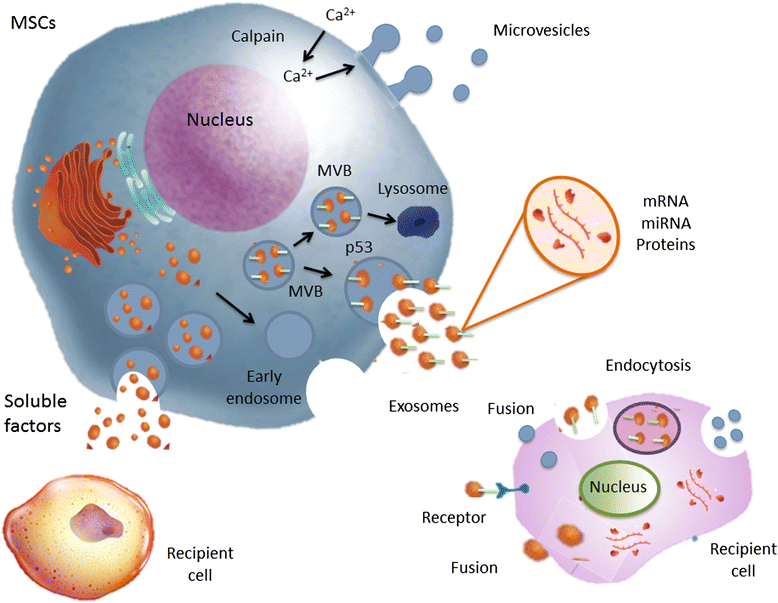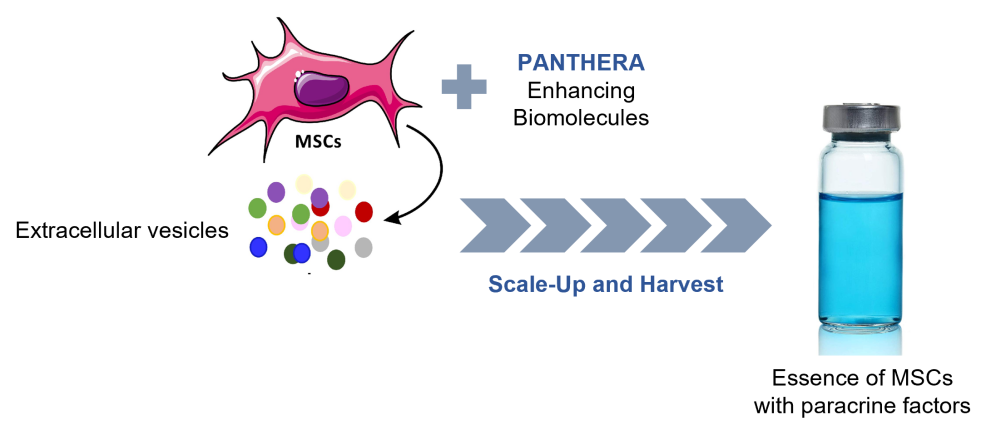Technologies
Pipelines
Locate Us
- 3 Little Road, CRF Building, #07-02, Singapore 536982
- info@pantheralabs.co
Cells package cell specific load of various proteins, lipids, nucleic acids and immunomodulatory agents into membrane-limited vesicles to be released extracellularly. These extracellular vesicles (EVs) travel through bloodstream or the tissue microenvironment to deliver its cargo to the target cells and have the ability to alter the cellular function and/or reprogram the cells.

Adapted from Salamanna et al1.
Secreted extracellular vesicles carry the key bioactive, paracrine components of MSCs
EVs from MSCs are a valuable source of regenerative therapeutics through paracrine effect on recipient cells. The active proteins and nucleic acids carried by MSC-EVs are released from MSCs to modulate proliferation, migration, and survival of target cells, and with the ability to act both proximally and distally within the body to exert its effect. Being cell free, EVs does not carry the risk of migration, differentiation and engraftment that are potentially possible for stem cells and well suited for allogeneic application.
In Panthera Labs proprietary technology, we can scale up production of MSCs in defined conditioned media to release EVs containing specific paracrine factors for different regenerative applications. Each batch of EVs is profiled to ensure its consistency and to eliminate undesirable biomolecules. Combining with our application-specific enhancing biomolecules, we aim to deliver a potent formulation to hasten the repair processes with minimal side effects.

References